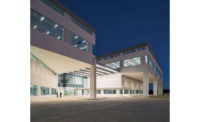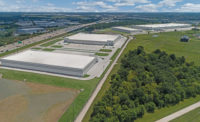Hawassa Industrial Park
Hawassa, Ethiopia
Best Project
Owner The Federal Democratic Republic of Ethiopia Industrial Park Development Corp.
Lead Design Firm Beijing Shougang International Engineering Technology Co. Ltd.
Contractor China Civil Engineering Construction Corp. (CCECC), Ethiopia Construction Private Ltd. Co.
The Hawassa Industrial Park, located in Hawassa, Ethiopia, was completed in July 2016 with assistance from China. Sitting on 1.378 million sq meters, the park hosts 37 factories that boast cutting-edge infrastructure and equipment. Also, the park was designed with numerous energy-saving features.
The park is Africa’s first textile and clothing facility to feature sustainable development. Not only that, it is expected to generate 100,000 local jobs.
CCECC Ethiopia Construction oversaw the project, while Beijing Shougang International Engineering Technology Co. served as the lead design firm.
The facility complies with a zero-emission standard, resulting in 90% of water being recycled. Rainwater collection and landscape pools are in place to green the surrounding area, a strategy which reduces local water consumption. Designed to reflect regional and cultural characteristics, the park also has 50,000 trees and 470,000 sq m of lawn.
Vocational training was provided for all construction and technical employees over the nine-month period of active construction. Other project benefits include increased employment for those living around Hawassa, stronger local labor skills and a higher standard of living, officials observe.
CCECC’s Zuo Wupeng notes that, in May 2015, the CCECC director signed an agreement with Hawassa University to allow civil engineering students to gain work experience, which “ensured the amount and the quality of local employees on site.”
For several weeks, Chinese engineers trained local employees based on their related experience and “especially emphasized [construction] quality and safety,” Wupeng says.
“We could control the progress, safety and quality conditions in real time on site, and all problems could get feedback and solutions in real time,” Wupeng says.
More than 2,000 local workers were active on site at the peak of construction, with only 26 management staff. According to Wupeng, the management team early on adopted a train-the-trainers approach, speeding proficiency and buy-in from local workers.
There were design challenges, especially in terms of discharge standards and device installation. Specifically, when looking at the blueprints, the Chinese and Indian teams had to overcome language barriers, which took extensive communication and prolonged planning approval, Wupeng says.
As part of the treatment process, no pollution stormwater will be discharged directly into Hawassa Lake, while domestic wastewater will be treated and recycled for use in toilets and landscaped areas, Wupeng observes. Also, water polluted by textile effluent will be treated and stored to meet the zero-discharge requirement.
Modeling Hawassa Industrial Park based on the area’s tropical savannah climate, most of the buildings are primarily passively cooled and heated, thanks to structural alignment, structural insulation, energy-conservation technology, structural passive ventilation and other energy-conservation technologies. Ancillary mechanical systems include air-conditioning and an axial fan, Wupeng notes.
Some of the building materials were locally purchased, including those used to finish the floors and walls.
Contractors also bought items—water valves, ceramic basins and lamps, among them—from markets in Ethiopia, Wupeng says. To ensure high standards, developers supervised everything from basic materials to electrical equipment.
Other building products were purchased from China, India and other nations.
Related Article: Global Best Projects Awards 2017







Post a comment to this article
Report Abusive Comment